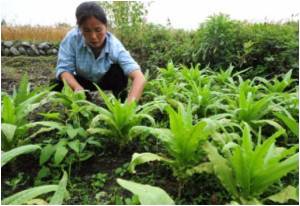
While increasing rice production has always been the primary objective of agricultural researchers, not much attention was paid to reducing methane emission from paddy cultivation. Existing efforts to mitigate rice-associated methane emissions have focussed mainly on agricultural practices - such as water management, fertilizer use, tillage and crop selection - which are labor intensive.
Now a report in the journal Nature says that Chinese scientists, in a ground-breaking demonstration, have grown a new variety of rice called SUSIBA2 that meets the twin goals: it is high yielding and, at the same time, the fields growing this rice emit less methane than conventional varieties.
The new rice variety is the result of collaborative work of scientists from the Fujian Academy of Agricultural Sciences and Hunan Agricultural University in China with researchers in the Swedish University of Agricultural Sciences, Uppsala, and the Pacific Northwest National Laboratory in Washington.
The authors generated SUSIBA2 by transferring genes from barley that are responsible for the production of starch in stems and grains using what is called "transcription factor technology".
In rice, the leaves and stems take up carbon-dioxide (CO2), which is transformed through photosynthesis into sugars. These sugars are used to produce plant biomass or storage compounds, such as starch, in the shoots, roots and rice grains.
Advertisement
The researchers present evidence for this from field trials conducted in three regions of China in three consecutive growing seasons. They report "a significant" reduction in methane emitted from SUSIBA2 rice plants, compared with a widely grown unmodified variety.
Advertisement
Besides the general questions surrounding the use of genetically modified crops for human consumption, "we do not yet have a clear picture of how this modification affects rice plants' survival and general function," it said.
More important, it said, "will be assessment of the long-term consequences of reduction of root-exuded carbon on beneficial soil microbes". Is the Chinese development something to be followed up by India?
"It is quite interesting and challenging," Tikam Jain, a former assistant director general of the Indian Council of Agricultural Research and currently a consultant to the World Bank aided projects in Asia, said in an email.
He says authorities must however first examine "if the rice quality and its production capacities are acceptable to the Indian farmers before any further action is taken by India for adopting this technology".
Source-IANS










